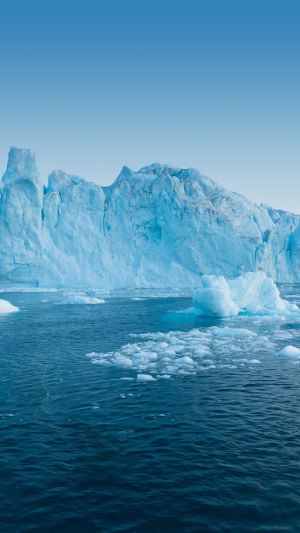A new climate science research paper published in Nature Geoscience, a professional academic journal of Springer Nature, shows that thousands of years ago, the fast-moving ice flow extending to the northeast Greenland ice sheet stagnated and suddenly reconfigured.
The findings may contribute to understanding the stability of the Greenland ice sheet under future climate scenarios.
According to the paper, ice accumulated from snowfall in Greenland's interior generally moves towards the coast, and some of it moves rapidly in the form of ice streams. Ice flow and direct surface melting are two of the most important ways that ice sheets lose mass. The Northeast Greenland Ice Stream is a good example of ice mass loss from the contemporary Greenland Ice Sheet.
While knowing the overall behavior of this and other ice sheets is vital, it has been unclear why ice flow occurs and how stable it is over time.
Steven Franke, Alfred Wegener Institute in Germany, and colleagues and partners used radar data to investigate the ice buried deep beneath the northeast Greenland ice sheet, which was then used to recreate previous ice flow patterns in the region.
They discovered a sequence of noticeable folds, indicating that the ice was moving quickly north of the present Northeast Greenland Ice Stream. According to the alignment and deformation of these folds, at least two now-inactive streams of ice originally existed. Although it is difficult to determine the exact age of these features. But the authors argue that these ice streams were active until at least about 11,500 years ago and that their source came from farther north than modern ice flows.
The authors of the paper concluded that the exact reason for the change in the position of the ice stream is still unclear. But the Greenland ice stream can quickly adjust to changing glacial conditions, and continued warming could lead to similar reconfigurations in the future, with potential implications for sea level rise.
Climate change is melting Greenland's glaciers
The island of Greenland, known as the largest of Iceland, is characterized primarily by its glaciers and severe cold. The temperature here is lower than 0°C all year round, but with global warming, the temperature continues to rise, and the melting rate of Greenland's ice sheet is more significant than before.
According to relevant data, 600 billion tons of ice will disappear in 2019. So from this data, we can know that global warming will have a corresponding effect on everything on the earth.
According to relevant data research, if all human beings do not stop and reduce carbon emissions, the melting of glaciers will continue and by the end of the 20th century, the global sea level will rise by 7 meters or more.
The large-scale melting of the island's ice cap is actually directly related to the greenhouse effect. According to relevant monitoring personnel, the greenhouse effect has caused the temperature in Greenland to continue to rise, which can be said to be about twice the global average temperature rise.
Due to the rising temperature, more than half of the icebergs in the area collapsed or melted, coupled with the rising ocean temperature, glaciers will move more frequently and melt faster.





